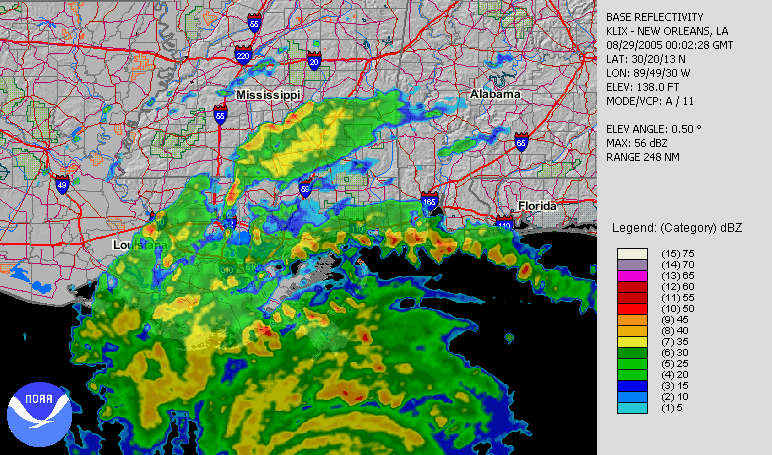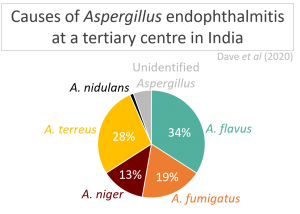Submitted by Aspergillus Administrator on 7 October 2009
Hurricane Katrina devastated large numbers of homes that lay in its path when it made landfall in 2005. It was the sixth largest hurricane on record in the Atlantic and the most costly and deadly in the history of the United States with over 1800 people losing their lives.
Tens of thousands of homes were severely effected by extensive flooding and as a result of the warmth and moisture moulds grew rapidly inside houses. In these conditions moulds can start producing mycotoxins within a few days of the initial flooding.
Over the next few months people fell ill with a variety of symtoms that could be consistent with exposure to moulds e.g. asthma, memory loss, fatigue, headache, muscle pains or weakness etc. These are not universally agreed to be related to mould exposure as they tend to be considered to be a collection of rather vague symptoms for which there is no tool to measure.
Mycotoxins are known to be highly toxic when present in sufficient amounts (there is a lot of data on animals fed with contaminated food) so there is a movement to consider whether or not mycotoxins could be causing those symptoms thought to be related to mould exposure.
This paper published recently examined the levels of mycotoxins in people exposed to moulds after Katrina. There had been no easily available tool to measure the levels of mycotoxins in the bodily fluids and tissue samples from people thought to have been exposed to moulds but this paper addressed that shortcoming and demonstrates the usefullness of several methods not only to detect the presence of mycotoxins but also to detect the levels of several different types of mycotoxin in several different tissue types.
Levels exceeding 2 parts per billion (up to 18ppb) of several different mycotoxins were detected in people suffering ‘mould exposure symptoms’ and these were compared with no detectable mycotoxins in control unexposed individuals.
Mycotoxins are therefore proved to be detectable in the Katrina victims in this study – so have they made these people sick?
Unfortunately we still do not know the answer to that question.
2-18ppb is well below mycotoxin levels known to cause acute or cumulative mycotoxin poisoning in animal models. We cannot yet rule out toxicity caused by long term exposure to these levels of mycotoxins, or exposure to a cocktail of different toxins, both of which may well have effected this group of people but evidence is not yet ready to confirm or dismiss the possibilities.
At least as a result of this work we now have some of the important tools with which we can start to answer these questions.
News archives
Showing 10 posts of 953 posts found.
-
Title
Date



